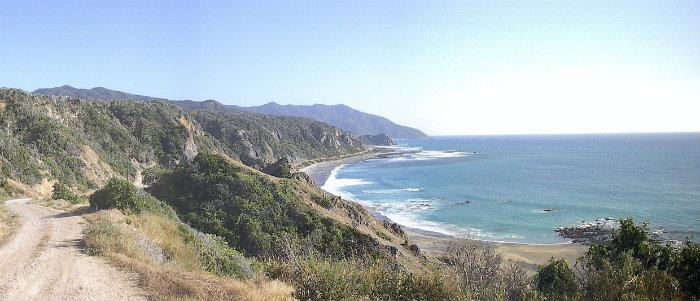“Ban Set To Go Beyond March 2020 – Writing Was On The Wall”, Says The Gleaner, in which Marine Biologist, Dr Karl Aiken blames local over-fishing for the rapid depletion of conch in Jamaican waters and for the ban on conch fishers.

However, while the article did not make mention of any natural occurences that may be a contributory factor, environment enthusiast Joe Issa is skeptical about the return of the original stock any time soon, urging research into what else might be the cause.
Issa argued that although he is not an expert on the subject of conch, nor climate change, “I remain suspicious and concern about the phenomenon and its possible impact on the future of the lucrative conch export trade and on the fish population generally.”
He added: “I give due respect to the experts, who have warned us that the Caribbean will be completely devoid of fish within 50 years mainly through overfishing; however, I can’t help wondering what else we do not know about what threatens earth and our very existence.
“I am no expert on conch or climate change; what led me to be suspicious that natural events in the atmosphere and in particular our oceans may be playing their part in the depletion of conch and other marine life in our waters, is based on the many research which discover that things are worst than was ever imagined.”
said Issa, who has expressed opposition to global warming during the last two global conferences, argued further: “It is instructive and intuitive that many of the discoveries of gross underestimation by scientists involve the rate of depletion of ecosystems and the existence of others.

“And there are other areas: the depleting ozone layer, the rise in sea level, the rate of carbon emission into the atmosphere, and the presence of carbon in our oceans, which have many currents moving cold and warm water around the globe, and changing weather patters and systems,” Issa opined.
Analysis of data of the conch population off Jamaica’s coast indicates that the ban on the fishing, sale and export of queen conch (Genus strombus) will be extended well beyond the near one-year timeline announced by the Ministry of Industry, Commerce, Agriculture and Fisheries last Friday. It could take years before the conch stock is replenished to commercially viable levels.
“It is an inescapable biological fact that conch take between four to five years to mature. This means that the conch closure may extend for considerably longer than one year,” marine biologist Dr Karl Aiken told The Gleaner recently. “It is not quite bust yet, but bad enough that it had to be closed for a while.”
Writing On The Wall
Aiken, who for more than two decades has been a member of the13-member Convention on International Trade in Endangered Species (CITES) Authority of Jamaica delegation, says the depletion of this marine resource comes as no surprise to the four aquatic and marine specialists on that august body.
According to the report, Aiken, who is a senior lecturer in the Department of Life Sciences at The University of the West Indies, Mona, revealed: “We sorta saw the writing on the wall over the past couple of years, where the first thing we saw that signalled that something might go wrong in the near future was what I call the clumping of fishing efforts.”
Data from the short study, done in conjunction with consultant veterinarian Dr Winthorp Marsden, one of four conch experts on the CITES body, was disturbing, Aiken reportedly said.
“When we ran the pictorial plotting of where these boats had been fishing during conch season, all of them were gathered in areas not far from the cays, near the centre of the bank. And each year, we noticed that they were fishing at the same place,” he was quoted explaining.
When the scientists shared this information with the fishers, explaining the likely implications for the sustainability of their livelihood, they argued that their short-term economic gains trumped the environmental concerns, the report said.
“They refused to take our advice, and we made a note that something bad was going to happen because they refused to spread out the fishing effort. It was concentrated in like a 20-square-mile area, and the Pedro Cays is humongous. The entire area is like two-thirds the size of mainland Jamaica,” the marine scientist reportedly said.
Dramatic Decline
However, it was the dramatic decline in conch stock between the 2015 and the November 2018 surveys conducted by experts in the Fisheries Division of the Ministry of Industry, Commerce, Agriculture and Fisheries that informed the ministerial order on the ban. Having conducted a total of six surveys, they had more than enough historical data on which to peg the ban, said the article.
Aiken reportedly explained: “There were some areas where there were moderate stocks of conch in 2015. During the 2018 survey, them don’t even find one so-so conch in some of those areas, not even one. No conch at all were seen for 300, 400 metres, with three or four of them diving together, covering vast areas during each dive, and that signalled, certainly to us, especially if you overlap the data, including pictorial data, just how serious a decline had taken place.”
The initial ban on the fishing, sale and export of conch takes effect from March 1, 2019, to January 31, 2020, according to The Gleaner report.
According to Wikipedia, Conch is most indigenous to the Bahamas, and is typically served in fritter, salad, and soup forms. In addition to the Bahamas, conch is also eaten in the West Indies, particularly in Jamaica, where it is used in soups, stews and curries. Restaurants all over the islands serve this particular sea food.
Continuing, it said In the Dominican Republic, Grenada, and Haiti, conch is commonly eaten in curries or in a spicy soup. It is locally referred to as lambi. In the Turks and Caicos Islands, the Annual Conch Festival is held in November each year, with local restaurateurs competing for the best and most original conch dishes, then judged by international chefs.
In Puerto Rico, conch is served as a ceviche, often called ensalada de carrucho (conch salad), consisting of raw conch marinated in lime juice, olive oil, vinegar, garlic, green peppers, and onions.









